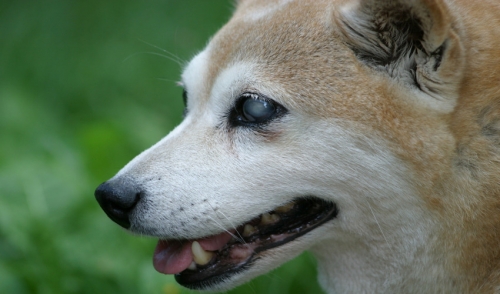Caring for a blind dog can seem like a burdensome, time-consuming task at first. However, sharing a loving relationship with a blind dog can be a rewarding and fruitful experience for both parties. Taking the proper steps to train and orient a blind dog can make them more functional than you may think is possible at first. The extra time and effort in the end will be dedicated towards an altruistic and fulfilling relationship with your blind pup.
Prepare firstly by safety-proofing your entire household. Hazards such as sharp corners on countertops, tables, or other household appendages must be softened or cushioned ahead of time. Try to foresee all potential dangers by literally lowering yourself to the height of your dog and taking a gander around your home. Secondly, identify all stairwells, even if it is only two or three stairs between landings. You will eventually have to begin orienting your blind dog to the staircases in your home, especially if they are not familiar with their surroundings. An effective method is to attach a childproof gate to the top of staircases to prevent your dog from having a nasty fall.
Secondly, establish a familiar routine for your dog to follow in your household. Coach them through where the water bowl will always be located in addition to feeding zones throughout your house. Make sure they are aware of doggy doors and entrances so that they can be self sufficient when needing to relieve themselves outside. Make sure that your dog is aware of any spatial alterations throughout your home such as new furniture or appliances. It is best to keep the layout of your home as similar as possible so that you blind pup is not caught off guard or confused by any newfound arrangements.
Lastly, it is crucial to foster loving and positive communication with your dog as he or she suffers from blindness. Continue speaking, playing, and bonding with your dog throughout their vision decline. Having a loyal owner and companion will do wonders for your pup’s demeanor while enduring their disabled state. This high level of communication is also important for orienting your dog to new surroundings. Whenever taking your dog into unfamiliar territory, always make their comfort and safety a priority by showing them staircases, entrances, and potential hazard areas. A shorter leash will work best when walking your blind dog, as you will have a more secure command to their direction. These are all simple and practical tips that any blind dog owner can instantly utilize on a day-to-day basis. Your dog will continue to be your best friend and companion whether they’re blind or not, so always lend a conscientious and sensitive mindset to their needs.






Comments